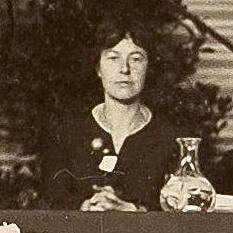|
On the 28th of June, 1918 Laura Hughes sat down in her Chicago, Illinois home and drafted a letter to the United States Secretary of War. Hughes had become aware of the fact that the US had taken delivery of some 20,000 straight-pull bolt action Ross rifles from Canada in order to get functional and somewhat modern rifles into the hands of military organizations. In response to this information Hughes condemned the use of these rifles by the U.S. Government, and claimed to have evidence that they "did not prove to be of any value in the field" -- a contention that was forwarded to the Chief of Ordnance, Brigadier General William Crozier, for disposition. (For this and other historic weapons documentation check out Archival Research Group!) Click below to read more!
Her Uncle was an early and ardent supporter of the Ross Rifle, even throughout the many problems of the various iterations of the rifle that saw service with Canadian forces. It is somewhat telling that he also supported such "innovations" as the MacAdam Shield Shovel -- which was by most accounts was a lousy shovel and even worse piece of battlefield armor! The Canadian Expeditionary Force (CEF) had switched over to a newer Ross variant before the war (the Mark III), but it met with poor results in the harsh trench warfare conditions of Europe, and many Canadian troops in the field replaced it with Lee-Enfields when they got the chance -- something that apparently angered Sam Hughes. The period problems in the field seem to be primarily due to tight chambers causing British made ammo with loose tolerances to stick in the rifles, although the bolt assembly safety concerns with the MKIIIs became the more (understandably) sensational issue over time. The poor performance of the rifle caused an uproar in the Canadian press, and this and his myriad of other issues eventually led to him leaving the government and the Ross being officially phased out. Laura Hughes was certainly privy to all of this before she moved south-of-the-border, but it is unclear to me whether or not her advice to the American government was out of the goodness of her heart / desire to help the war effort, or was instead a big middle finger to her Ross fanboy Uncle! In actuality the older Mark II*** Ross rifles that America purchased from Canada were of an almost entirely different design than those Ross’s primarily fielded by abroad by the CEF (for instance, I don't believe any of the parts interchange). The bulk that made it into the US wound up being used by the New York Guard (basically the state militia separate from the National Guard) to protect lines of transportation and communication, help stave off labor strikes, and guard other important infrastructure. This particular rifle is marked to Company A of the 65th New York, and presumably was the 63rd rifle in that organization. This bold rack marking makes identification at a glance very easy, and period photos seem to indicate that this was a common practice when in service with the state. While it does have the unfortunate side effect of obscuring much of the original Canadian serial number, the stock is replete with numerous Canadian unit markings indicating that this rifle bounced around quite a bit, probably as a training rifle for Canadian troops preparing to go overseas. The bayonet and scabbard are likewise marked with a "US" and flaming bomb denoting acceptance by the American government. While they ultimately proved to be unsuitable for the average rifleman on the modern battlefield, the Ross rifles have a reputation for being extremely accurate in the hands of skilled marksmen. Mark III's continued on in such service for the duration of the war, and even beyond. Furthermore the ones that got into US hands served two important purposes -- 1) arming stateside troops with modern firearms (they certainly beat a Springfield Trapdoor in .45-70) and 2) freeing up additional weapons for use by the AEF in Europe.
0 Comments
Leave a Reply. |
Jon K.Weapons collector, history buff, Army officer, Pug enthusiast. Archives
December 2020
Categories
All
|




 RSS Feed
RSS Feed
